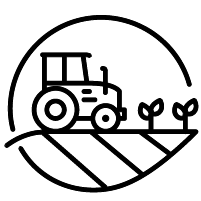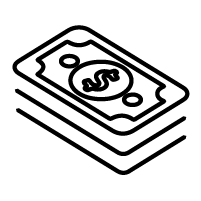Cultivating Energy, Regenerating Earth

Imagine desert sands irrigated with treated wastewater to grow energy crops. It may sound like utopia, but it’s already a reality. From 300 acres reborn in the desert to a vision spanning 300,000 acres, this initiative turns effluent into biodiesel, biogas, and thriving ecosystems. Wastewater becomes waterpower; barren landscapes become energy harvests.
From Crisis to Catalyst
Regenerating Land, Powering the Future
In a city of 300,000 along the Nile, an invisible crisis was quietly intensifying: over 21,000 cubic meters of treated wastewater were released into the surrounding desert each day. This constant discharge didn’t just vanish—it seeped into groundwater, disrupted fragile ecosystems, fueled insect outbreaks, and pushed the region further into ecological decline.
Where most saw a liability to contain, this project recognized a resource to reimagine.
With a bold, systems-thinking approach, it launched a transformative initiative: to reclaim degraded land and convert wastewater into a resource—not a liability. The method? A regenerative, circular model that irrigates energy cropsusing the very wastewater once seen as harmful. Restoration and renewable energy, grown side by side.
The shift began: Land was cleared. Smart irrigation and fertigation infrastructure were deployed. What was once dry, barren ground became sixty acres of thriving cultivation. And this was just the first chapter.
Scaling Ambition Into Reality
The momentum is real—and accelerating:

5,000-acre target
in sight, with 550 acres already secured under a 25-year lease

300 acres under cultivation,
with another 250 set for planting in 2026

$7M committed in early-stage investment,
with a total vision of $1.2B to develop 300,000 acres

Biodiesel production launching in 2026,
followed by a biogas plant and full-scale biofuel factory
And innovation is already bearing fruit. The project successfully introduced Egypt’s first rapeseed and sunflower crop for biofuel, marking a major agricultural milestone. Rapeseed and sunflower aren’t just efficient for biodiesel production—especially in colder markets—it also produces a high-protein byproduct (rapeseed/sunflower cake) that serves as a key input for biogas generation. This production is dedicated entirely to clean energy, achieving 100% GHG savings. Importantly, it does not compete with food production for humans or animals, ensuring that energy crops do not take land away from food supply.
Redefining Land, Energy, and Possibility
This isn’t just about energy security or agricultural renewal. It’s a strategic reimagining of how land, water, and waste can intersect to deliver long-term value—ecological, economic, and social.
It transforms marginal landscapes into productive ecosystems. It converts environmental threats into industrial assets. It opens new chapters for local agriculture, energy independence, and climate resilience.
More than a project, this is a living model of regenerative development—circular, scalable, and rooted in impact.
The future of energy is cultivated, not extracted. we’re growing it.

